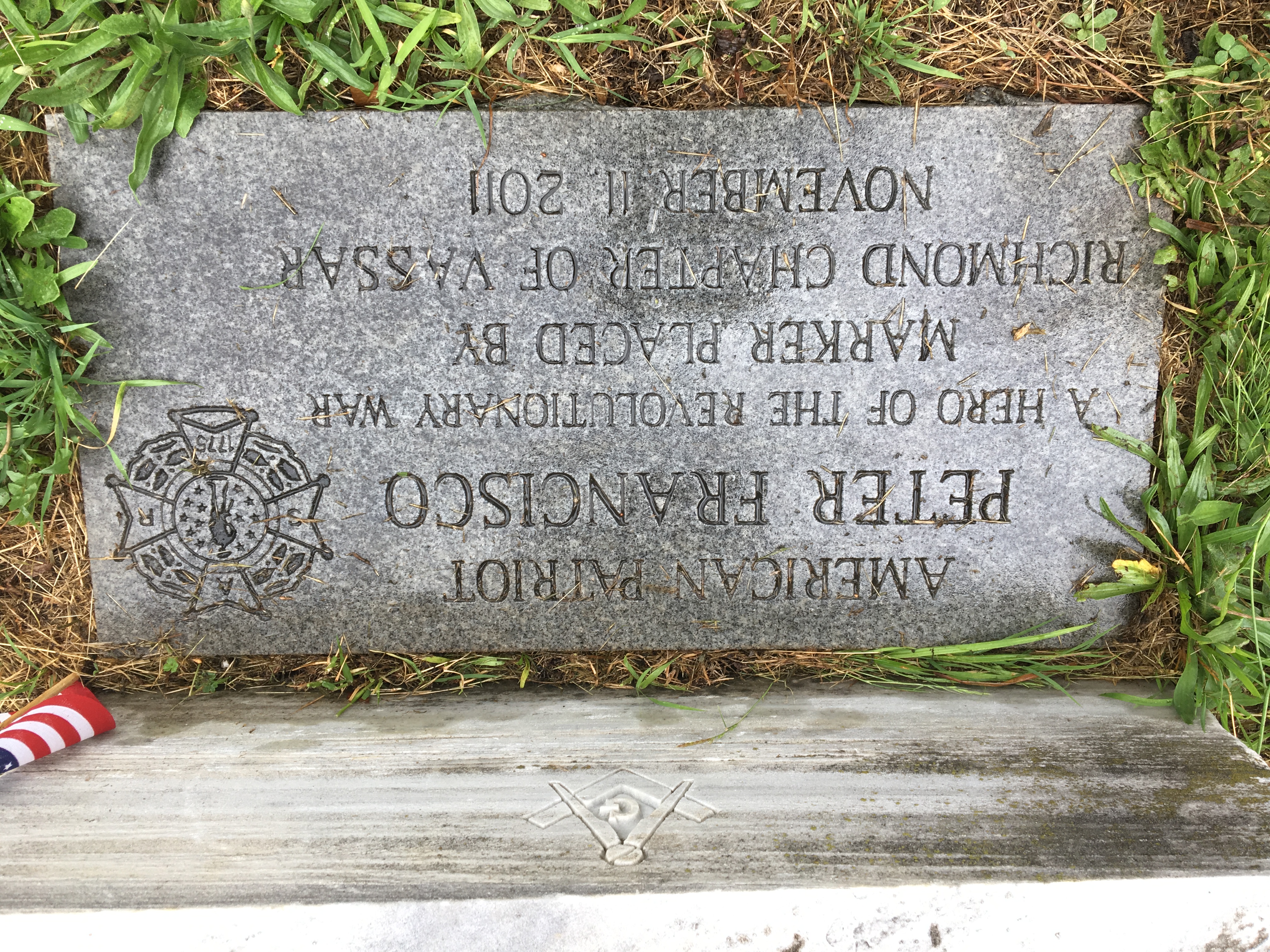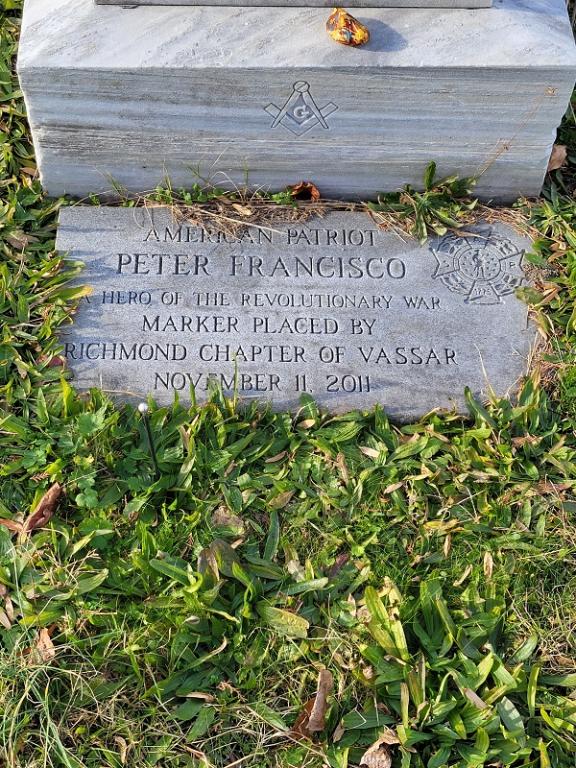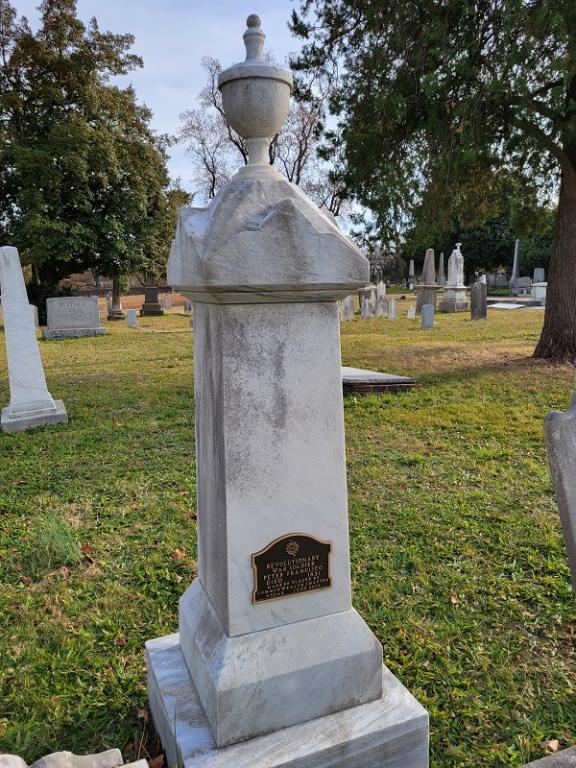Peter FRANCISCO
SAR Patriot #:
P-161532
The following information was assembled from numerous sources and cannot be used directly as proof of Qualifying Service or Lineage.
It is considered a research aid and is intended to assist in locating sources that can be used as proof.
State of Service: VA
Qualifying Service: Private
DAR #: A041640
Birth: 09 Jul 1760 Porto Judeau Terceira Island / Azores / Portugal
Death: 16 Jan 1831 Richmond / Henrico / VA
Qualifying Service Description:
- Pvt, Colonel Hugh Woodson, 10th VA Regiment, Continental Line
- Also, Cavalry, Lt Philemon Holcomb, Gen Greene
Additional References:
- Peter Francisco - The Portuguese Patriot, William A Moon, pg 45, 46, 52-56 and 60-62
- Gwathmey, Historical Reg of Virginians in the Rev, pg 286, 287
- Pension Number S*W11021
- BLWT 8002-160-55
- DAR Patriot Index, pg 249
- Porter, N.S. 1929, The Romantic Record of Peter Francisco
Spouse: (1) Susan/Susannah Anderson; (2) Catherine Fauntleroy Brooke; (3) Mary B Grymes West
Children: James Anderson; Susan; Mary/Polly; Catherine; Benjamin Morris;
Members Who Share This Ancestor
| Date Approved | Society | ACN | SAR Member Info | Lineage via Child | View Application Detail | |
|---|---|---|---|---|---|---|
| 1976-01-29 | FL | Unassigned | John Wilton Francsico (110141) | Benjamin | ||
| 1988-08-09 | KY | 222210 | William Montgomery Corum (131643) | James | ||
| 1988-10-26 | KY | 222133 | Ashby Toland Corum (131976) | James | ||
| 1992-06-16 | VA | 212930 | Benjamin Harris McGehee (139091) | Benjamin | ||
| 2010-07-22 | VA | 39658 | Donald Binford Pruitt (177635) | Mary/Polly | ||
| 2010-07-22 | VA | 39659 | Steven Gerald Pruitt (177636) | Mary/Polly | ||
| 2011-08-18 | KY | 43657 | Toland Griffith Corum (180490) | James | ||
| 2011-08-18 | KY | 43658 | Anderson O'Brien Corum (180491) | James | ||
| 2011-08-25 | NC | 43791 | Travis Scott Bowman (180592) | Benjamin | ||
| 2018-06-29 | VA | 81684 | Robert Franklin Grimes Jr. (208051) | Mary/Polly | ||
| 2020-05-22 | VA | 91641 | William Melville Brown lll (215418) | Mary |
Location:
Richmond / Richmond City / VA / USA
Find A Grave Cemetery #:
Marker Type:
Vertical Monument with Bronze Plaque
SAR Grave Dedication Date:
11 Nov 2011
Comments:
Find-a-Grave includes unsourced biography
Directions to Cemetery / Gravesite:





